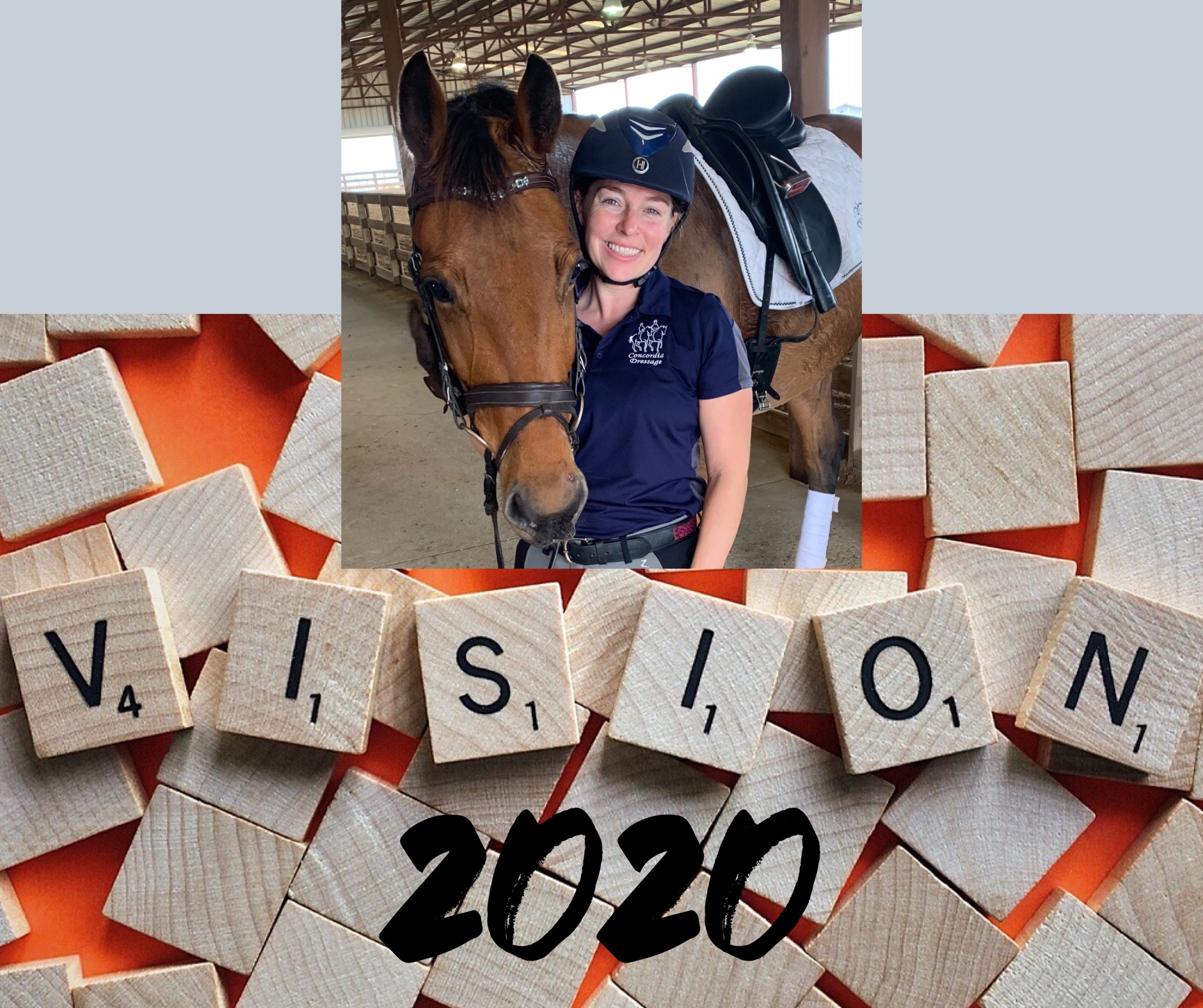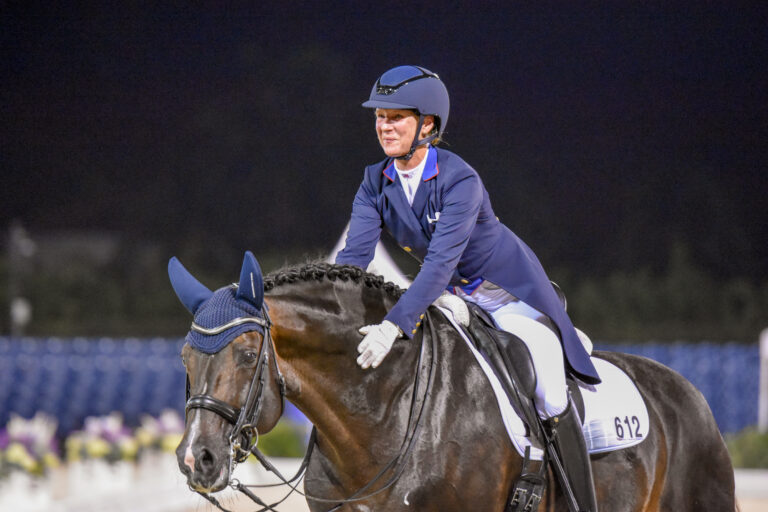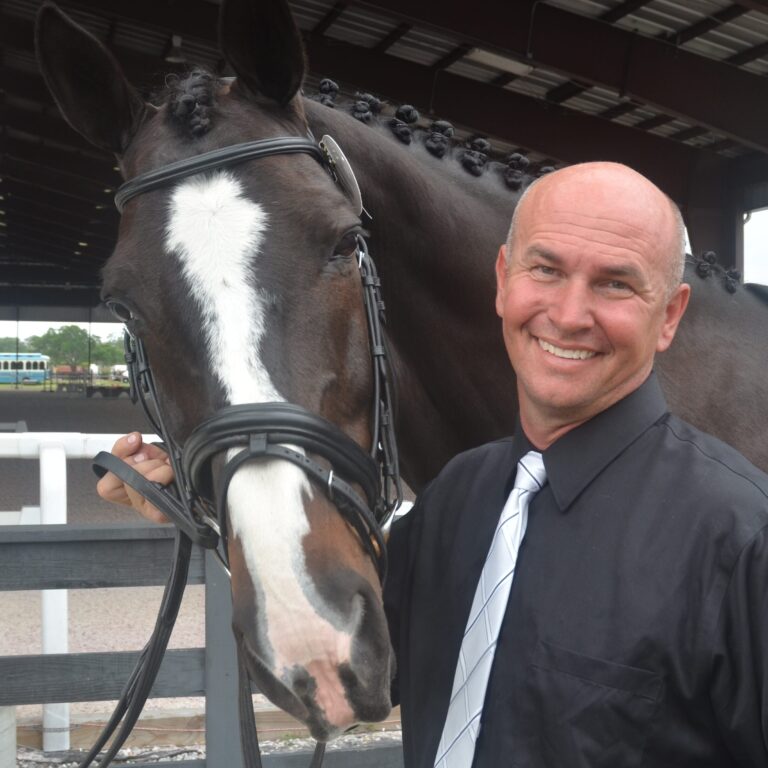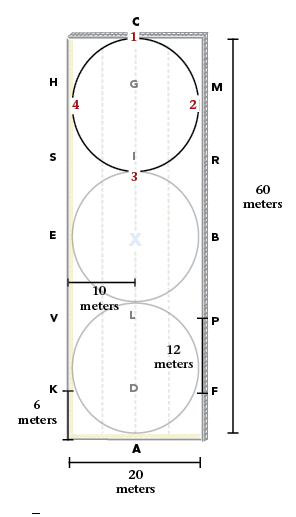It’s that time of year—the competition season has come to a close. Regional championships and the U.S. Dressage Finals are behind us. The holidays have come and gone and we might have struggled to fit in our rides after balancing holiday shopping, parties, travel and all the other stresses that come between Thanksgiving and New Year’s Day. Although it is a busy time of year, it is my favorite time of the year for training as we have time to dig deep without the pressure of an upcoming show or clinic. It’s a time where my sole focus can be on bettering my horses as we begin to plan for the new year ahead.

As an Amazon Associate, Dressage Today may earn an affiliate commission when you buy through links on our site. Products links are selected by Dressage Today editors.
In this month’s blog I want to write about goal setting. For some, goal setting is an easy exercise but for others it can feel overwhelming, as embarking on a new challenge has a way of bringing out our vulnerabilities and insecurities. I am a big believer in goals, both in riding and in life. I think by defining goals, we are setting a destination into our GPS. It gives us guidance and clarity on our journey, but it is inevitably still our job to drive the vehicle and also, hopefully, enjoy the scenery along the way.
Because the journey and development of the horse should always be our first priority, I think it is important to connect with our values before we set out on listing our goals.
Define the values that guide your beliefs and behaviors. Some examples include: commitment, open-mindedness, consistency, efficiency, creativity, positivity, respect, perseverance, improvement, growth, service, competitiveness, etc. These core values determine our priorities and are part of the foundation on which our personalities, behaviors and beliefs are based. When you feel fulfillment and satisfaction, you are most likely living in alignment with your values. If you are not, check to see where you are not in harmony with those values.
It is important to be more process focused, rather than result focused in the pursuit of our goals. When setting riding related goals, we are partnering with a being who has his own mind and his own limitations. In addition, if your goals are competition based, you are relying your outcome on an external source in a very subjective sport. I am not saying that horse show goals are bad. On the contrary, I believe they can be a great way to measure our progress but we must never base our happiness on external results. This way, win or lose, if you stayed true to your values, you can be proud of yourself.
Unfortunately, many people believe that they are not enough—not smart enough, not thin enough, not a good enough rider. Be honest with yourself and determine if you are searching for external validation when setting your goals or if you are choosing goals that will stretch you and help you grow as an individual. Everyday, love yourself a little more. The validation and the sense of accomplishment is the most fulfilling when it comes from the inside. External validation is fleeting—one minute there, one minute gone. If you base your happiness on it, your happiness will be fleeting as well.
Show up every day and work hard for you and you alone (and the betterment of your horse, of course). Riding allows us an incredible opportunity for personal growth and an expansion of our character. Approach each challenging experience that arises as a chance to step outside your comfort zone and evolve. This ability to develop a growth mindset and face each situation with the question of What can I learn from this? instead of Why is this happening to me? can be one of the biggest shifts you can make for lasting change in all aspects of your life.
When I set goals, I find it’s useful to follow the SMART goal system. SMART stands for Specific, Measurable, Attainable, Realistic and Timely.
Specific: Can you clearly state your goal? It could be something like earning your USDF bronze medal or learning how to ride a half pass. It should not be as vague as to “be a better rider.” If your goal is too broad, see if you can narrow it down to more specific components. Perhaps you want to be a better rider by learning how to better sit the trot and how to influence the horse more effectively by being more clear and precise with your aids. Figure out what you want to accomplish and why this goal is important to you.
Measurable: This one can be a little more challenging if your goals are not competition or score related but you’ll just have to get a little creative! If your goal is to achieve a certain score or qualify for championships, this is pretty easy to measure. You either achieve it or you don’t. If your goal is to learn how to ride a half pass, how are you going to measure this? Perhaps you could participate in a “Ride a Test” or lesson with a judge and work toward getting a 7 or 8 on your half pass. This takes the goal and makes it measurable. If the goal is to learn to better sit the trot, perhaps you could hold yourself accountable to a certain number of rotations around the arena in sitting trot without taking a break. The question here is, how will I know when I achieve my goal?
Attainable: Is this a goal that is realistic? If I am a five-foot tall person in my 50s who has never played basketball in my life, setting my sights on playing for the NBA is not attainable or realistic. Evaluate yourself and your horse and be honest with yourself about your limitations. It’s important to set goals that stretch us, but you also do not want to be setting yourself up for failure.
Realistic: Is this the right time for this goal? If your horse is just coming 6 years old, it may not be time to set your Olympic goal for 2020. Instead set those smaller “micro” goals to help you on your path to success.
Timely: Goals need deadlines. If you have a goal to show at a new level next year, pick a competition that you can target. This gives you accountability and can help you better plan your micro goals and when you should be meeting them. I wish you the very best success and happy riding in 2020!
This Month’s Exercise
For this month’s exercise, I want to help you to outline your goals so that you can step into 2020 with a plan of execution. Get out a pen and paper or open a Word document. According to a study performed at Dominican University in California, you are 42 percent more likely to achieve your goals if you write them down. Writing them down can help you gain much needed clarity on the final goal and the stepping stones to get you there.
Step 1: Define CORE values
To define your core values, you can think back to a time when you felt very happy, proud or fulfilled. This can be horse related or not. What about the situation made you feel that way? Was it because you showed great compassion in a difficult moment? Or that you overcame adversity through your sheer determination? You can also find a list of core values online and just look through the words and feel what resonates with you. Determine which five or so CORE values act as the guiding light to your character. Knowing these values can help you in your goal-setting process and also throughout the year as you strive for your goal. Remembering your core values in times of low motivation or failure can help you keep perspective and be more process-focused rather than result-focused.
Step 2: Analyze Strengths and Weaknesses
Your strengths should correlate with the core values you have identified such as dependability and determination. They can also be more technical in nature such as I sit very correctly in my left half pass or I am confident when trying new exercises. These can literally be anything but identify at least five strengths. I think we so often get focused on the negative aspects and it’s important to focus on both the positive things and the things we want to improve on. If your goal is to compete at a certain level, look at each required movement of the level and identify where you are strong and where you are weak.
Step 3: Identify Your Goal
You may already have a clear goal in mind. If so, write it out. If you do not know what your goal is, use the list you made above and determine which of your weaknesses you will improve on in 2020.
Step 4: Use the SMART system
Is your goal specific enough? Identify the what and the why. How will you measure it? Is it attainable at this time or in the near future? Is it relevant? Is it timely? Can you set a deadline for it?
Step 5: Set Micro Goals
We must set micro goals as checkpoints on our path toward our macro goal. Evaluate where you are at this time and create a clear path toward achievement. If your goal is to earn your USDF bronze medal, your micro goals may be to first show First Level, in which you are already competent, and earn the two required scores above 60 percent. Your next micro goal, or stepping stone, may be to teach your horse the simple changes so that you are ready to show Second Level by the summer. Write down your plan for that, including specific exercises that will help you and your horse become proficient in the movement. You may have one stepping stone or twenty on the course to achieving your macro goal.
When breaking down your goals into manageable portions, I encourage you to set an intention for each and every ride. This could be as simple as “encourage relaxation” or more technical, such as, complete four balanced, connected and straight canter departs each direction.
At the end of the day, our intention should always be to have the horse more supple, balanced and relaxed than when we started the ride so if your horse is getting stressed and anxious with a specific exercise, best to step back, re evaluate and try again tomorrow.
Step 6: Visualize and Affirm
Visualizations and affirmations can be powerful tools to help you on your journey. Many studies have shown that visualizations create the same patterns in the brain that the actual
activity does so you can actually become better at something through an established visualization practice. Each day, close your eyes and visualize yourself riding that perfect test, or picking up the correct lead each time. Really pay attention to what it feels like physically and energetically when you accomplish those goals. The energy you emit to the world actively creates your reality so believe in yourself with everything you have. Have faith that you have the skills, the determination and desire to achieve your goals. At least twice a day, each day, affirm your goals verbally. If your goal is to earn your USDF bronze medal, say to yourself, I am a bronze medalist. Use present tense and really tune into how you feel as a bronze medalist. Does it make your stomach flutter, a sense of pride well up in your chest? These feelings are important—lean into them!
It’s time to take that first step on a new journey! Embrace the opportunities for growth and enjoy the time you spend with your horse. If, at any time, you are feeling lost or discouraged, refer back to your written plan for clarity and motivation!
Keep your chin up, align your horse and ride forward! Until next time,
Jenna
To read Jenna’s previous blogs, click here.
Jenna Arnold is a USDF bronze, silver and gold medalist and bronze, silver and gold Freestyle Bar recipient. She is a writer and founder of Mindful Riding, a website and program dedicated to helping riders develop a more meaningful relationship with their horse and with themselves by balancing mind, body and spirit. She is the mother of two young daughters and runs Concordia Dressage with her husband, Martin Arnold, near Austin, Texas.











